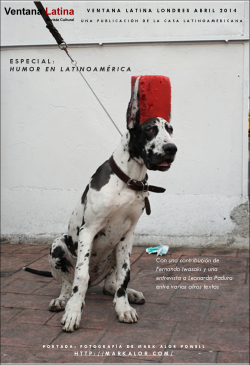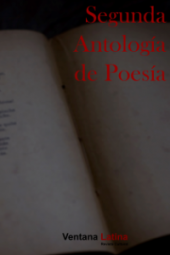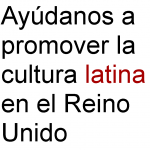Ten Questions with Photographer Jorge Alberto Pérez
By Veronica Sanchis, translated by Ellen Donnison
This May we have the good fortune to interview the talented Cuban artist, curator and writer, Jorge Alberto Pérez, who currently lives in New York where pursues his creative career.
Jorge Alberto Pérez is a graduate of the MA programme in the Photographic Arts at Bard College/International Center of Photography in New York City, where he was awarded a scholarship from the Director’s Scholarship Fellow. During 2013 Pérez completed a residency in art criticism at New York’s Camera Club (CCNY). In autumn of 2014 he will become resident curator at the CCNY. Jorge Alberto works in a variety of mediums, including photography, collage, installation and text. Through his work Pérez questions the veracity of the image within the economy of desire in visual culture, and the allegorical value of fragmented images. His intensive work of cutting up images and archiving their fragments, which sometimes appear more than once in various pictures or installations, is an exploration that continues in the spirit of Walter Benjamin’s Denkbilder, expressing a libidinal economy of fragmented desires. With these new forms, Pérez creates allegorical images, intentionally unknown. These allegories come with mysterious central characters and questionable narratives.
Ventana Latina: 1. What inspired you to become a photographer?
Jorge Alberto Pérez: More than anything it was the death of my father; that sensation of loss, both full and empty at the same time, pushed me towards the machine that stops time. It was possibly my attempt to live slightly secluded from the present, and the camera aided that wish. By putting this object between myself and the rest of the world it let me see everything with more patience, to enjoy the ugly details as much as the beautiful ones, these traces of our existence. However, the act of creation was, above all, the only way to subvert the pain and confusion, which arrived with my first contact with mortality. Since then I have never stopped capturing and creating with the camera. During my studies for my photography MA in New York, I finally accepted that I’m a voyeur, observer and poet. The camera helps me combine these traits that are part of my instinct, without losing artistic intention. On the other hand, an image’s creation, the preservation of a decisive moment, adds another layer of significance. What is ironic is that when my world seemed to fall apart I started to take photos and now my own fragments are what dominate my artistic practice.
VL: 2. Do you think there exists such a thing as a Latin American style in photography?
JAP: The truth is that my answer is both yes and no. Perhaps, if one can recognise in art from a certain part of the world, a particular point of view, a special way to interpret life. Being Cuban, an islander, maybe I leave ‘cultural footprints’ in my art. When I had an exhibition in Palestine I was surprised when an Italian architect who was looking at fairly simple documentary images, told me that he noted a Caribbean feeling in my work. I was surprised and I confess that I liked the idea even though I had no idea how it could be possible.
VL: 3. Can you please explain a little about your photographic technique?
JAP: My technique is not very complicated. Most of the time I prepare the fragments and when I have a mise-en-scéne that I like, that is to say, one which elaborates the fundamental idea that I’m exploring within my allegorical style, I grab the camera and I take photos. In this sense I continue using the camera to document an event. Every formula of fragments is a temporary performance – because after the photo all the fragments are returned to an archive containing thousands and thousands of clippings. Naturally I also use light, direct or indirect, to create reflections or to show the transparency of the paper. I don’t use glue and I don’t use Photoshop. It’s a ‘collage’ without glue, closer to a photomontage, maybe because the final result is smooth. Also, I prefer to print large images because they create an interesting tension when something so ephemeral like a small and fragile cutting has been monumentalised. My artistic practice is always a meditation, a game in which I loose myself, an exploration of trial and error.
VL: 4. What theme you have developed most in your photographic work?
JAP: What has interested me most is ‘the fragment’ especially taking into account the idea of Denkblid developed by Walter Benjamin. For Benjamin it was a literary fragment but for me it’s the idea of visual fragments liberated from the economy of images. Permitting those as well as mixing them with a vague meaning (the question, ‘what is the truth?’) in an allegorical style, is what fascinates me. I say ‘allegorical style’ because every fragment that one incorporates within part of a new narrative, in itself, represents or symbolises the idea and concepts of our consumer society. Allegorical messages that are already sown in the images that I cutup and are mixed within the fragments. If I’m successful, I extract a meaning that was previously hidden, which is to say, extending a metaphor already extended and in the process I unbalance it. Writing corresponds with the image and is the de-codifier (in general this occurs automatically). However, when an image in a certain medium, is incoherent (for it’s design), how does one fix it so it can be interpreted? How do the readers know to change the allegorical methods of understanding to something else? And what is that other thing? Obviously, I can’t speak of the visual ‘fragment’ without taking into account the concept of appropriation, as it is inextricably linked to my artistic practice. Of course, it’s impossible to not be a ‘thief’ working in a ‘collage’ style. It’s interesting to question what percentage of a photo continues being the artists’ property when it is printed in a magazine and is circulated throughout the world. Up to what point can one peel back an image before it’s considered free from its slavery? Nevertheless, in my opinion we are experiencing the ‘last days’ of ‘printed matter’- soon everything will be virtual. It’s also interesting noting which type of images are the ones that are printed today, when every day it becomes less practical and more costly to do so. Which messages are the most important to encode? Like Benjamin’s Denkbilder, my practice implies the accumulation of thoughts (in the form of cuttings) and the construction (or reconstruction) of opinions relating to life – so much as a daily, philosophical feeling. I also have to stop to know that I was and continue to be inspired by Robert Heinecken, Richard Prince, Carrie Mae Weems, Hannah Höch, John Heartfield, Kurt Schwitters, Jess Collins, Alejandro Jodorowsky, Ed Ruscha, Ann Hamilton and Wangechi Mutu.
VL: 5. Is there a specific project you would like to develop in Latin America?
JAP: Yes, but I can’t reveal it right now, I’m still in the investigation phase. I can say that it’s a documentary project about daily life in various places and the idea of what constitutes a family unit. Like always I’m interested in how these things mix with one another, how their definitions change, how we have the capacity to modify our own perceptions to our needs and wishes.
VL: 6. How are your photographic projects developed from the idea to the practice?
JAP: I play and I experiment, but I always do a lot of research. I try to approach a theme from different angles before deciding what I think are the common denominators that I’m going to represent photographically.
VL: 7. Have you ever thought about using different artistic mediums with photography, such as multimedia for example?
JAP: Yes, I also create objects such as sculptures and installations, whilst having to understand that certain themes function as an image in various states of presentation. It’s how to create a larger mise-en-scéne, a situation where one has to pose questions, and with a little observation one can discover something unexpected.
VL: 8. Have you considered developing a project in Cuba, your native country?
JAP: I have never been back to Cuba as an adult and now I have a great desire to go back more than ever before. Recently, due to my sister’s illness, many family secrets have escaped which are fascinating to me, in the sense that there are various ‘truths’ in each family in which we live multiple lives, the notion of mistakes, transformations, etc. I want to go to Cuba and document some of this history – such as the real version and the version that one supposes is real.
VL: 9. Are you currently working on a new project?
JAP: Yes, I continue to widen my artistic practice through installations and sculptures above all having to see with visual detritus. At the International Center of Photography (ICP) in New York, I was asked to make a special installation (for the first time since I made some similar work in my individual exhibition for my MA). The truth is that it was phenomenal to work in three dimensions, working out my ideas about how we see, what we see, how we interpret interrupted ideas…
VL: 10. What represents a good photo for Jorge Alberto Pérez?
JAP: I love to be surprised, above all when I think that I understand what I see, but in reality it’s something totally different. It’s difficult to do this is photography, however, it’s not impossible. A good example is Vik Muniz who simply takes photos of accumulated ‘objects’ but the image that dominates is something else. In another sense, a photo in which something is revealed, something more subtle that can be discovered with patient observation gives me much enjoyment.
To see more work by Jorge Alberto Pérez, click here.
Jorge Alberto Perez Blog







 Copyright © 2024 Company no. 6720498 10 Kingsgate Place, London NW6 4TA, United Kingdom Tel: 020 7372 8653
Copyright © 2024 Company no. 6720498 10 Kingsgate Place, London NW6 4TA, United Kingdom Tel: 020 7372 8653